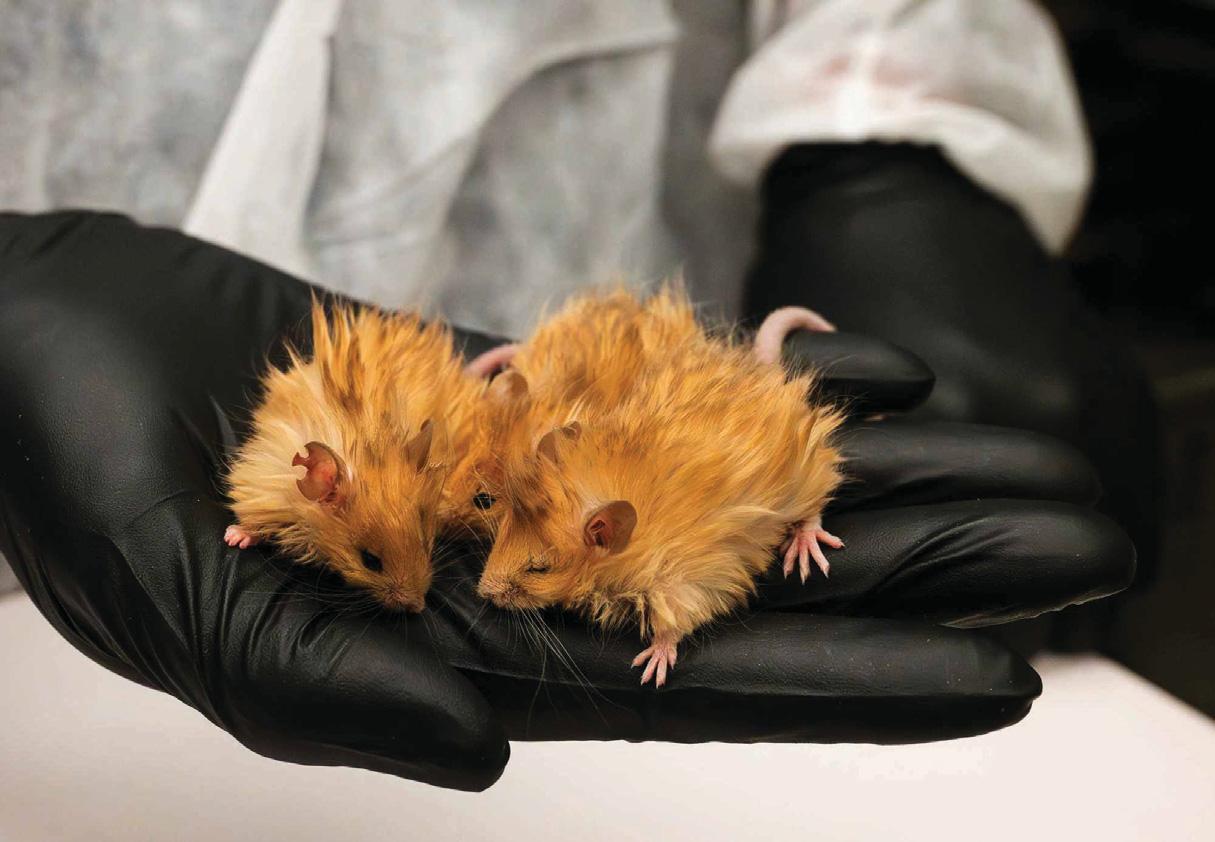To make the mice, scientists used the latest genetic technologies to introduce eight simultaneous edits to the genomes of laboratory mice. These include the addition of genes that cause its fur to grow up to three times longer than normal, and others that make the hairs wavy and golden. Other edits targeted genes associated with fat metabolism that are thought to have helped mammoths increase in size.
The mice are the result of years of painstaking work by scientists to reconstruct key parts of the mammoth genome. The last woolly mammoths are thought to have died around 3,000 years ago, and scientists have been piecing together bits of degraded mammoth DNA from remains between 3,500 and 1.2 million years old. This is the first time that some of the key genes identified through that work have been expressed in a living animal.
image [https://cdn.magzter.com/1422872401/1742287718/articles/kGeTh1_Cg1742363500380/1942772994.jpg]
MAMMOTH 2.0
Colossal’s ambitious long-term plan is to add lots of these mammoth genes to embryos of modern-day elephants to create mammoth-like hybrids.
Despite its claims to be resurrecting the woolly mammoth, the original Mammuthus primigenius, with all its original genetic complexity and population diversity, isn’t being brought back to life. The creatures are more accurately described as “cold-resistant elephants”.
Announcements that the return of the mammoth is close have been made repeatedly by various groups. dating as far back as 2011. The groups are generally privately funded and the exact details of their work are often rather opaque.
But these living, breathing and rather cute woolly mice do show that scientists have made impressive progress in reconstructing some of the key genes that made mammoths unique. Colossal’s chief scientist Dr Beth Shapiro says the mice are “an important step toward validating our approach to resurrecting traits that have been lost to extinction.”
A MAMMOTH TASK
There’s still an awful lot of work to do before we see mammoth-like creatures stepping out across the tundra or walking around our zoos.
For a start, it’s much easier to create gene-edited mice than elephants. Mice have been a staple of genetic experiments for decades and can be bred in huge numbers, quickly. Elephants, on the other hand, are rarely used in laboratory experiments and happen to have the longest gestation period of any living mammal – over 18 months.
image [https://cdn.magzter.com/1422872401/1742287718/articles/kGeTh1_Cg1742363500380/4297794394.jpg]
Colossal has been making impressive progress in manipulating elephant cells into stem cells that could, one day, be used to create modified embryos.
But even if Colossal can create viable elephant-mammoth embryos, both Asian and African elephants are endangered, so can’t be used as surrogate mothers in any great numbers, if at all.
This means Colossal must also develop its own artificial wombs to develop the experimental embryos all the way to birth. This has never been done before: not only will such a system have to recreate all the complexities of a placenta, it’ll need to support a calf that weighs at least as much as an Asian elephant calf – that’s over 100kg (220lbs).
But perhaps the biggest question that remains is simply, why? Colossal says that resurrecting the mammoth –...


